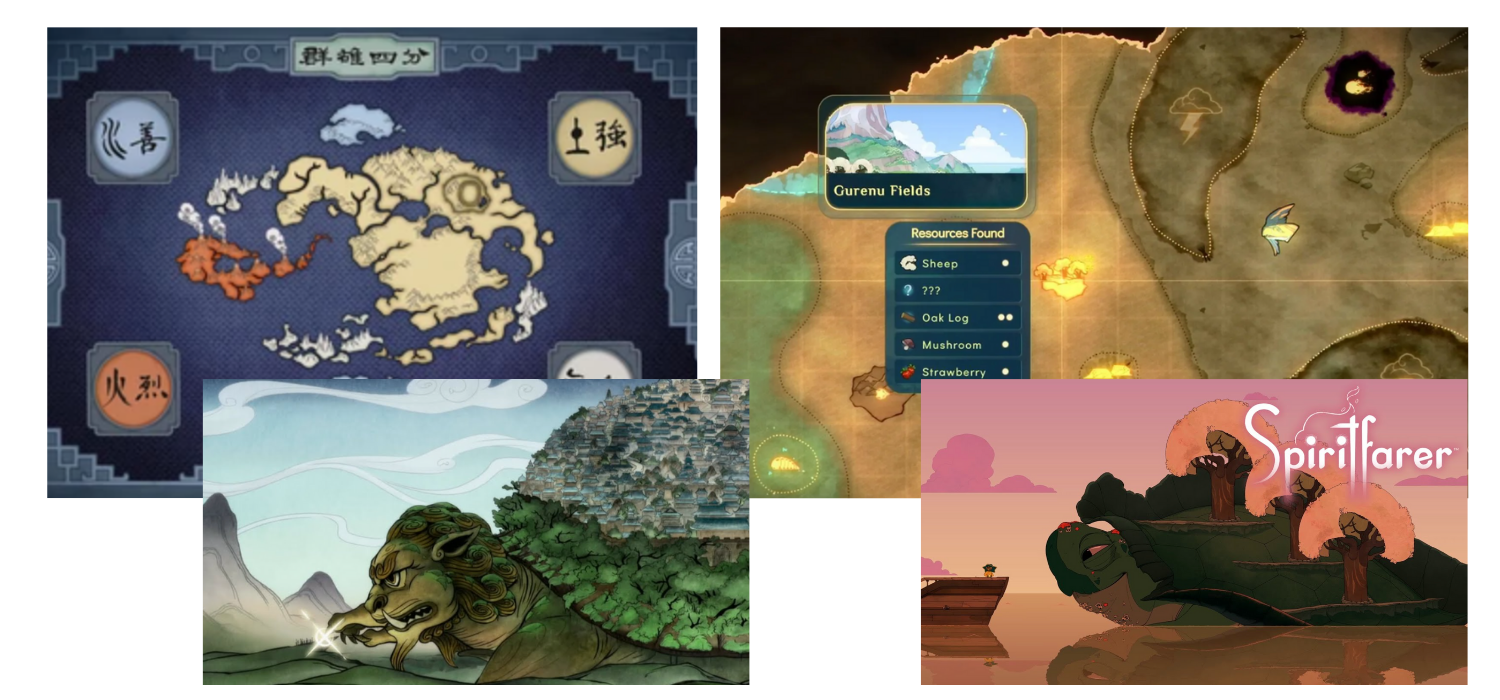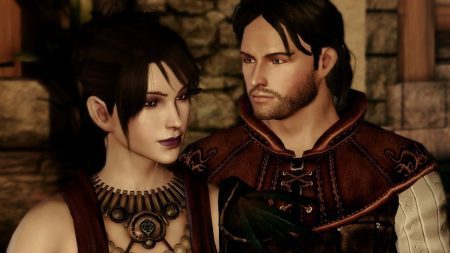When I read the premise for Spiritfarer, I thought to myself, “Wow that sounds heavy… and I’m def going to play it.” In case you haven’t heard of the 2020 management simulator, here’s the premise listed on the Switch store from indie developer Thunder Lotus Games:
Spiritfarer is a cozy management game about dying. You play Stella, ferrymaster to the deceased, a Spiritfarer. Build a boat to explore the world, then befriend and care for spirits before finally releasing them into the afterlife. Farm, mine, fish, harvest, cook, and craft your way across mystical seas.
Oh yeah. I had a feeling it would get to me, so I downloaded it during a spring sale and kept it in my backlog until I was done with a stressful few months and was ready to open my heart to all the feelings. I loved this game for a lot of reasons, but one stood out to me.
When I started playing Spiritfarer earlier this month, I instantly had this feeling that I was playing the spiritual sister of animated excellence Avatar: The Last Airbender and its series sequel The Legend of Korra. If you like those shows and want to try a (relatively) new indie game that can scratch that feeling, check it out.
Here’s why Spiritfarer makes such an excellent Avatar: The Last Airbender video game:

Enter the Spirit Realm: How the World of Avatar and Korra Translates to Spiritfarer
In Korra, we get to see the story of the first Avatar, Wan, who lived and thrived in the Spirit World alongside wondrous creatures in a mystical plane. Throughout Avatar: The Last Airbender, we see Aang connecting with the natural world, its animals, and its elements in a similarly spiritual way.
In Spiritfarer, spirits arrive on your ship as personified animals. They merge in and out of sparkly, floaty existence, just like the spirits in the Avatar world. Even the rune-like designs on their bodies reminded me of the shows’ art styles. While the spirits are quite different entities between the properties, their similar embodiment and equally vibrant personalities warmed my heart.

The Protagonist of Spiritfarer and Aang Are a Lot Alike
Aang is a child wise beyond his years, especially considering for 100 of those years he was frozen in an ice block. The protagonist of Spiritfarer, Stella, is also young and has a cheerful energy and smile. She rushes forward to hug spirits, plays with her cat, and jumps and floats with the same exuberance as the young Airbender.
Furthermore, Aang and Stella both wield unique powers in their worlds, Aang as the Avatar and last Airbender, and Stella as the new Charon with a special tool called the Everlight. Yet, neither holds their power over others with malice. Their generosity of spirit with their great powers is heartwarming, and every now and then, I liked to pretend I was playing as a future Avatar in Stella. Plus, they both have quirky pets that follow them around and sometimes even do useful things, Aang with Momo and Stella with Daffodil.

The Goal Is in the Journey
For much of Avatar: The Last Airbender, the Aang Gang is just traveling the world. Unlike the show’s sequel, Korra, which had a dope new baddie every season, Aang pretty much knows the situation from Day 1 of the show. He and his friends spend all three seasons of the series preparing for the showdown. They get ready by traveling the world to build skills and forge alliances.
Spiritfarer’s magic is also in the journey. There is a large beautiful map that includes giant powerful turtle-earth-beings (similar to the Avatar world’s lion turtles!), and you spend much of the game charting your course and discovering things along the way. On your ship, you build up a small village of farms and resources, all while gathering friends. You talk to new people on each island you make land, never knowing who you’re going to meet and who will aid or join you.

Like Avatar, Spiritfarer Oscillates Between Sweet Humor and Poignant Reflection
We all cry just thinking about “The Tales of Ba Sing Se.” We all remember “Appa’s Lost Days.” Even as I wrote those episode titles, I could feel goosebumps. Those episodes of Avatar are SO SAD but so beautiful. They hurt in all the right ways. Yet, these tones are balanced and resonate harder when paired with Avatar’s lighthearted, youthful sense of humor during much of the show. Avatar: The Last Airbender stands out as a television show for both children and adults because of this rich duality.
Spiritfarer operates on a similar emotional frequency. Some characters made me smile, others straight up giggle. They’re written with care and finesse. Just like Avatar, Spiritfarer features a musical soundtrack that doesn’t detract from the action but cleverly boosts the emotions. There’s one vendor whose cue I’d hear before I saw him, and I was like, “My guy!” every time my ship pulled alongside him. On the flipside, when it’s time to bring a spirit to the afterlife, the game gets reflective without being overtly depressing.
Spiritfarer is joyful and melancholy, silly and serious, dreamy and realistic. Just like Avatar, it’s a meditation on a life well lived.
Spiritfarer (2020, Thunder Lotus Games) is available for $29.99 on Nintendo Switch, PlayStation 4, Xbox One, Microsoft Windows, Linux, Google Stadia, and Mac.
Want more video game recs for TV shows like Avatar: The Last Airbender? Check out 5 Video Games for Anime Lovers.
Amanda Tien (she/her or they) loves video games where she can pet dogs, punch bad guys, make friends, and have a good cry. She started writing for the site in 2020, and became an editor in 2022. She enjoys writing about mystery games, indies, and strong femme protagonists.
Her work has also been published in Unwinnable Monthly (click here to read her cover feature on Nancy Drew games), Salt Hill Journal, Poets.org, Litro Magazine, Public Books, and more. She was the Co-Founder and Editor-in-Chief of Columbia University's Culinarian Magazine, and served for two years as the Managing Editor of Aster(ix) Literary Journal.
She recently graduated with a MFA (Master of Fine Arts) in Creative Writing from the University of Pittsburgh. Her writing, art, graphic design, and marketing work can be viewed at www.amandatien.com.
She does not post a lot on social, but you can find her on X and on Instagram.











